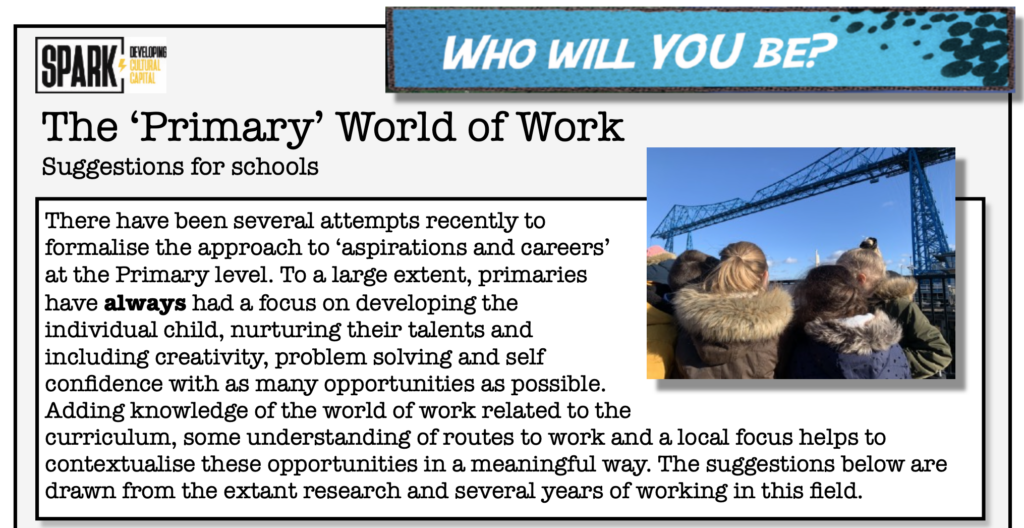Cultural Capital and social theory
Our work is based on developing Cultural Capital. Like all great research it has people arguing about what it actually means but the video to the right sums up our approach based on the theories of ‘habitus’ and agency. Our experience strongly suggests, and the research seems to agree, that developing cultural capital in a targeted way increases motivation, a sense of agency, achievement and even earnings in later life. Some of the key research links are at the bottom of this page.
The key word in the phrase is ‘capital‘ it is about the sense of power or agency that children, or indeed anyone, feels they have in the culture in which they find themselves. Widening a child’s cultural capital widens the sphere in which they feel a part and where they can have agency.
Measuring impact
Impact, impact. impact. What is the point in using any of these resources if there is no discernible impact? If I was an OfSTED inspector or a school improvement officer I would be asking that very question…

So here is the why…
There is a huge, and growing, amount of evidence strongly suggesting that children who know more about the world of work do better at school and in subsequent life.
They achieve more and earn more. Full stop.
Some links to the research base are at the bottom of this page for those of you who like to read such things.
The evidence strongly suggests that if we develop a culture of linking our work in school to the world of work, the children will be more engaged, motivated and ultimately achieve more because it makes the curriculum more relevant to them, their habitus.
Who doesn’t want that?
The resources on this website are a very simple way, even just as an assembly a week, to create that change in mindset. They have been created through years of feedback from thousands of pupils as to what engages them in a meaningful way. That is why they focus on people first, not ‘jobs’.
So let’s measure our success in a way that the resources allow. Below are simple survey forms and activities that your school can use to measure impact and evidence progress. On the scale that you are working, any claims about increased attainment are too intricately woven with all the other amazing work that you do, but we can say some things with certainty.
- Do the resources make the children more aware of potential future roles?
- Do the resources give the children greater knowledge of local companies?
- Do the children feel more positive about what opportunities exist for them in the future?
The research across huge sample sizes tells us that upward trending data in answer to ANY of these questions as a result of intervention will likely result in better attainment and future life chances. Resources on this site allow you to measure children’s responses to the questions above and demonstrate impact.
Resources for using with the children
The research, and our experience, tells us that at primary and early secondary the focus of developing cultural capital and work awareness should be on the idea of self. The national guidance on an effective PSHE curriculum offer, specifically identifies aspects of knowing about the world of work; people who work there, different types of jobs and different ways to become those people. OfSTED‘s inspection focus on a school’s curriculum offer looks at how it matches the needs of the children in the given context. Recent OFSTEDs in Primary have specifically questioned how the curriculum offer addresses aspirations.
What can you do in Primary schools to develop career related learning and develop cultural capital?
The resources on this website allow schools to raise the awareness of companies and roles on a regular basis, week in and week out either through assemblies or even dedicated class time. Based on the best practice outlined at the top of this page, they offer the opportunity to address all of the points identified with one set of resources. Our aim is always to make the resources relevant to the curriculum wherever possible and our National Curriculum objective map is a great way to identify resources that are relevant to what you are teaching each half term.
Many of the techniques that primary schools use are derived from the models that have been used in secondary schools for many years. Secondaries are now expected to judge themselves and be judged against the Gatsby Benchmarks, 8 key markers of an effective careers programme. Primary children are at a different stage of their development and the research is less extensive. However, through the research currently available and Spark’s experience of working with thousands of pupils over the past 20 years, there are some suggestions that schools can think about implementing below:
Research Links
If you want to find out more about the research that is constantly referred to here then please use the links below. This will be regularly updated as new research is released.
Careers and Enterprise report from 2018 reviewing existing research and surveying teachers and schools known to be working on careers related learning:
Influential longitudinal report staring at 10 years of age specifically focussed on STEM careers:
Survey of primary schools related to perceptions of career related learning and aspirations:
https://cica.org.au/wp-content/uploads/Introducing-children-to-the-world-of-work-FINAL-2.pdf
Paper examining the relationship between family poverty, aspirations and behavioural problems:
Government report looking at impact of SATs results on future earnings:



